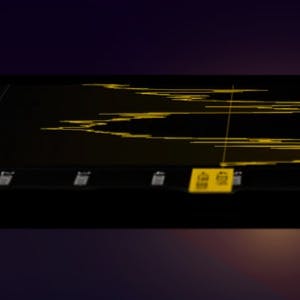- Home
- All updates
- EDGE Insights
- Industries
- Company Search
- My Watchlists (Beta)
EDGE Insights
Filter
EDGE Interview
Auston Bunsen, Co-Founder of QuickNode, on the infrastructure of multi-chain
Decentralized Finance (DeFi)
Aug 12, 2022

Decentralized Finance (DeFi)
Aug 12, 2022
Auston Bunsen, Co-Founder of QuickNode, on the infrastructure of multi-chain
Explore more on both Decentralized Finance (DeFi) and the emergence of Web3 through our hubs.
The third phase of the world wide web is abounding. Imagine the possibilities of a decentralized internet, where ownership is fragmented, dismantling the monarchical hold of big tech. The internet as we know it may change with the proliferation of blockchain applications, and as infrastructure providers like QuickNode develop their tools, they abstract away blockchain node management, so that building on the blockchain becomes more and more accessible. Auston Bunsen, the co-founder of QuickNode, talks about its key value propositions (speed) and explains the intricate landscape many have heard about but only a few understand. Inform yourself holistically by combining this in-depth interview with the recording of our most recent webinar on Web3, featuring Auston.

Source: A combination of data compiled on SPEEDA Edge.
The following interview was conducted by Sacra—August, 2022
Background
Auston Bunsen is co-founder of QuickNode. We talked to Auston to learn more about building a crypto infrastructure company, how multi-chain changes the market for blockchain developer platforms, and what it means to be developer-centric when it comes to blockchain developers.
Questions
1. What’s the problem you're solving with QuickNode and who are your customers?
2. Can you give us an “explain it like I’m five” explanation of how blockchain development platforms like QuickNode work?
3. For those who know Web2 infrastructure, what’s the layer of infrastructure for blockchain development look like: is it IaaS like AWS, or PaaS like Vercel, or is it more developer middleware like Plaid or Twilio?
4. From the developer perspective, what does their tooling look like when they're, for example, building a dapp?
5. Can you talk a little bit about developer-centricity and fintech? What’s different or specific for blockchain developers that helps you win and be top of mind for them?
6. You've talked about both Web3 and Web2 use cases. Are you focused on one or the other? Does one or the other seem more interesting in terms of growth? How do the use cases differ?
7. Could you talk a little about the market? How do you position yourselves with respect to Alchemy and Infura? How do you see the market today for blockchain developer platforms?
8. Can you talk a little bit about the multi-chain approach and how you’re positioned against Ethereum-focused Infura? Does that allow them to go deeper on Ethereum versus being more high-level across more chains? What are some of the trade-offs?
9. Can you talk about where you've built abstractions internally that allow you to treat every chain the same? Does that provide massive leverage to developers for any particular use cases?
10. The incentive on the developer side is that it allows them to expand their user base or their addressable market?
11. On that, can you talk about when one would want to integrate with OpenSea’s API directly versus integrating with the QuickNode NFT API versus some other approach?
12. Do you integrate with OpenSea's API to bring that in so that anyone who integrates with your NFT API will get that and not have to integrate with OpenSea? Or do folks integrate with both?
13. Can you talk about how you design for a company that gets stronger during downturns and can capitalize on the bull runs and boom times?
14. You mentioned that you don't necessarily have super-high concentration, but how do you think about concentration risk? How do you retain customers as they grow large on QuickNode given the kinds of build versus buy decisions other infrastructure products see?
15. Do people ever tell you they want to bring this in-house?
16. What do you think about this ideology out there that with services like QuickNode, Alchemy, and Infura, Web3 is going to be as centralized as Web2 in five years? How do you think about the future that you're building with QuickNode as it becomes successful?
17. What’s the long-term of what you're building? What sort of increasing returns to scale does your business have?
18. Can you share a vision-oriented statement with us? If everything that you're executing on just hits, what does QuickNode become in five years?
19. Does that basically come down to blurring or removing the distinction between writing Web2 software and Web3 software?
Contact us
Gain access to all industry hubs, market maps, research tools, and more
Get a demo
By using this site, you agree to allow SPEEDA Edge and our partners to use cookies for analytics and personalization. Visit our privacy policy for more information about our data collection practices.